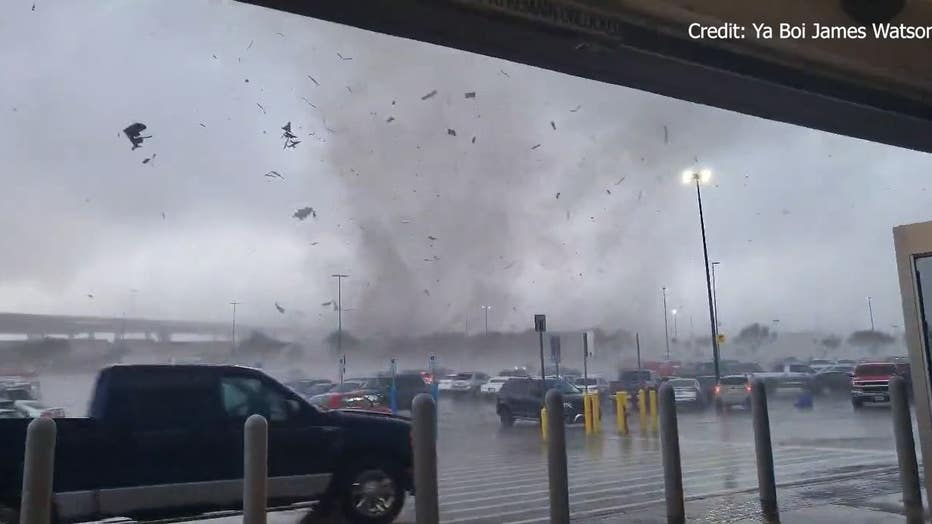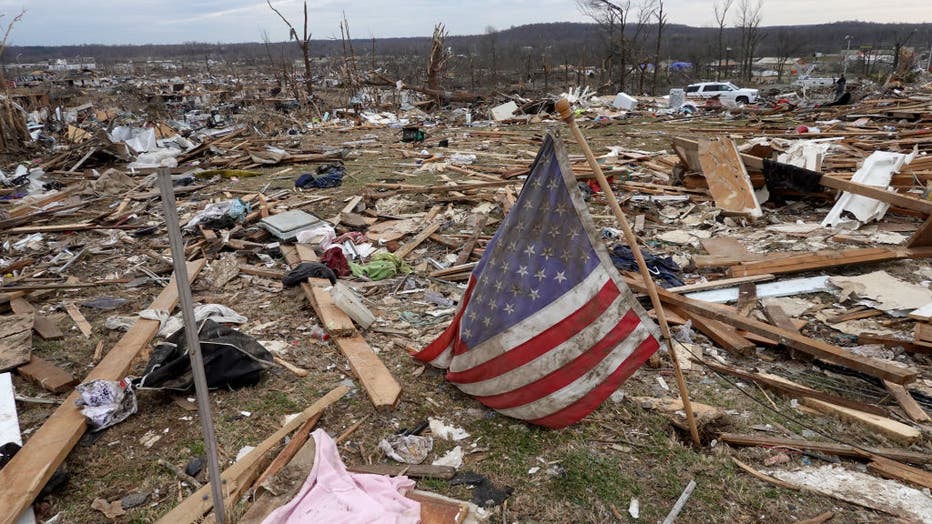Tornado watch vs warning: What to know as Debby threatens NJ, NY

Tornadoes hit western New York
The remnants of what was once Hurricane Beryl triggered a regional tornado outbreak in upstate New York, before finally heading back out to sea.
NEW YORK - Most counties in Northern New Jersey, New York's Lower Hudson Valley and parts of Connecticut are under an extended tornado watch as the remnants of Hurricane Debby spiral toward the NYC area.
Northeasterners aren't as accustomed to these severe weather events, and many do not know that the National Weather Service has different levels of alerts for tornado threats: Watches, warnings and emergencies.
Here's the difference, according to FOX Weather:
Watch
What it means: This type of statement is issued when dangerous weather is forecast to occur and widespread impacts to life and property are expected. It means forecasters believe conditions are right for severe weather to happen. You can think of this as the National Weather Service’s way of saying, "Be on the lookout for severe weather."
What you should do: Prepare for the type of severe weather that is indicated in the watch. This means reviewing your safety plans so that you are ready to take action if a warning is issued.

Tornado tears through parts of NY
A tornado tore through parts of Sullivan County in upstate New York, damaging several buildings.
Example: If a tornado watch is issued for your area, it means forecasters believe tornadoes are possible with any storms that develop. You should review your tornado safety plan, which means knowing how to get to the lowest level of the building you are in and how to locate an interior room with no windows on that floor.
Warning
What it means: This type of statement is issued when severe weather is occurring and poses an immediate danger to life and property.

People run into a Walmart as a tornado approaches the building in the Austin, Texas suburb of Round Rock. (Credit: Ya Boi James Watson)
What you should do: Take action, meaning you should immediately execute your safety plan for the type of severe weather that is indicated in the warning.
Example: If a Tornado Warning is issued for your area, it means meteorologists have detected a possible tornado on radar or a trained storm spotter has reported seeing a tornado. You should immediately go to your storm shelter. If you don’t have a storm shelter, get to the lowest level of the building you are in and head to an interior room with no windows. The goal is to put as many walls between you and the tornado as possible. Make sure to cover your head.

A flag lays sits among debris from destroyed homes following Friday's tornado on Dec. 15, 2021, in Dawson Springs, Kentucky. (Photo by Scott Olson/Getty Images)
Emergency
What it means: This is the most dire of all the statements that are issued by the NWS, and is usually reserved for tornadic situations. It means that there is a significant threat to human life and catastrophic damage is likely to occur. The tornado also must have been seen by a spotter or a particular type of radar signature that indicates the presence of debris in the air must have been detected.
What you should do: Take immediate action, by following your severe weather safety plan now.
Example: If a tornado emergency is issued for your area, it means meteorologists believe a large, destructive tornado is on the ground and moving toward you. Go to your storm shelter or the lowest level of the building you are in. Find an interior room with no windows and cover your head. Stay there until the storm passes.


